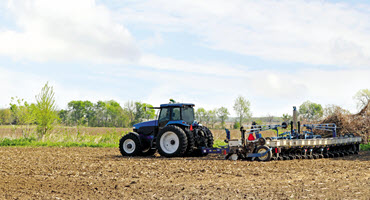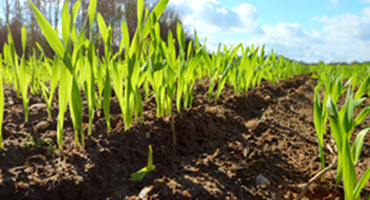Louisiana currently leads the U.S. in soybean planting
By Diego Flammini
Staff Writer
Farms.com
U.S. soybean growers have planted almost 40 percent of this year’s soybean crop.
Farmers have seeded 35 percent of the national soybean crop, the USDA’s May 15 Weekly Weather and Crop Bulletin says. That number is up from 15 percent last week and is 6 percent above soybean planting at this time last year.
Producers in Arkansas have planted 88 percent of their 2018 soybean crop, which is the highest among the 18 states documented.
South Dakota soybean farmers have planted 4 percent of their soybean acres. That’s the lowest in the U.S.
The soybean crop is also beginning to emerge.
About 10 percent of the 2018 soybean crop has emerged, the USDA says. Last week, no soybeans had emerged.
Corn
Corn seeding across the U.S. rose by 23 percent since last week’s report.
Farmers have planted 62 percent of the 2018 national corn crop, according to the USDA report. That number is up from 39 percent last week but remains 6 percent behind corn planting at this time last year.
Growers in three states are almost finished seeding their corn crops.

Farmers in North Carolina have planted 92 percent of their corn crop. That number is up from 81 percent last week and leads the U.S.
Growers in Missouri and Illinois have planted at least 90 percent of their corn crops.
South Dakota corn farmers have seeded 21 percent of their corn acres. That’s up from 6 percent last week but is 50 percent behind state corn planting at this time last year.
U.S. corn crops also continue to emerge.
About 28 percent of the 2018 corn crop has emerged, the USDA reports. That’s up from 8 percent last week.
Wheat
The percentage of U.S. winter wheat that’s headed remains behind last year’s crop.
USDA reports 45 percent of the winter wheat crop has headed. That number is up from 33 percent last week but remains 16 percent behind last year’s progress.
In Arkansas, 98 percent of the winter wheat crop has headed, which is the highest of the 18 documented states.
The USDA ranked 29 percent of the winter wheat crop as good. That’s up 2 percent from last week.
Growers also continue to seed the 2018 spring wheat crop.
Farmers have planted 58 percent of the national spring wheat acres, the USDA says. That number is up 28 percent from last week but is 17 percent behind 2017’s progress at this time.
Producers in Washington have planted 94 percent of their spring wheat, which is the highest of the six recorded states.
USDA reports 14 percent of the spring wheat crop has emerged.

Suitable fieldwork days
The states with the most suitable fieldwork days for the week ending May 13 were:
California, Arizona and New Mexico – 7
Nevada – 6.9
Arkansas and Louisiana – 6.8
The states with the fewest suitable fieldwork days were:
Wisconsin – 3.2
Michigan – 3.5
Iowa – 3.8
Weekly precipitation levels
State | Precipitation (inches) | Weather Station |
Illinois | 0.93 | Moline |
Indiana | 0.53 | South Bend |
Iowa | 1.09 | Des Moines |
Kentucky | 1.12 | Jackson |
Michigan | 1.41 | Grand Rapids |
Missouri | 0.22 | Kansas City |
New York | 0.95 | Binghamton |
Pennsylvania | 2.39 | Erie |
Tennessee | 0.79 | Bristol |
The next Weekly Weather and Crop Bulletin will be released Tues. May 22.